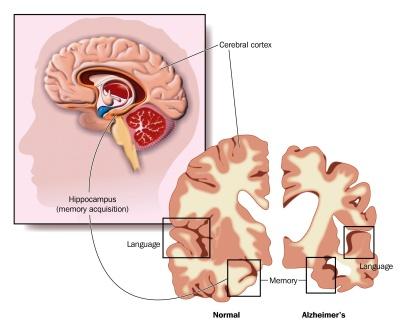Tarpaka Kapha – Location, Functions, Imbalance, Disorders, Treatment
By Dr Raghuram Y.S. MD (Ay) & Dr Manasa, B.A.M.S
Tarpana means nourishment or refreshing. Tarpaka means ‘that which causes satiation or refreshes.
Tarpaka Kapha is ‘that subtype of kapha which resides in head and nourishes the sense organs or control centers of sensory perception in brain’.
Tarpaka Kapha is one of the five subtypes of kapha.
Table of Contents
Sanskrit verse

Location
Seat of Tarpaka Kapha
Tarpaka Kapha is located in head. Head is considered as uttamanga or the best organ in body according to Ayurveda. Apart from brain, the head (cranial cavity) is said to be an abode of all sense organs with exception of skin which is spread out all through body.
But the nerves supplying skin, causing tactile sensations also come from the brain. Thus the head or brain can be said to be the abode of all sense organs including skin.
Read – Ayurvedic Head Massage: Benefits, Procedure
Being located in head, Tarpaka kapha is said to nourish brain and sense organs. It also nourishes the controlling centers of organs of sensory perception located in brain. This enables smooth functioning of brain and sense organs. Perception of all sense organs is dependent on perfect balance of tarpak kaph. This kapha also nourishes the channels responsible for carrying of sensory information to brain and for properly understanding the sensory perceptions.
Read – Srotas: Body Channels and Duct systems – Easy Explanation

Functions
Functions of Tarpaka Kapha
Sense organ
Aksha tarpana (Vagbhata) –
Aksha actually means eye. This would mean that the chief function of tarpaka kapha is to nourish the eye. But we need to take the meaning of aksha as aksha adi i.e. eye etc sense organs. Therefore the precise meaning of aksha tarpana would be ‘to nourish the eye and other sense organs’. Thus, main function of tarpaga kapham is to nourish all the sense organs and also their controlling centers in head.
Read – Netra Tarpana Treatment For Eye Care Benefits, How To Do?
Sneha santarpana adhikrutatvat indriyaanaam atma veeryena anugraham karoti (Sushruta) – Owing to its unctuousness and nourishing properties, tarpaka kapha refreshes, rejuvenates and nourishes the sense organs. Tarpakma kapham would do this due to its inherent power of saturating and nourishing things. All functions of sense organs and perception of sense objects depend on qualitative and quantitative balance of tarpaka kapha located in head.
Read – Improper Use Of Sense Organs: A Neglected Cause For Diseases
Brain, nerves
Nourishes the brain and nerves –
Tarpaka Kapha located in head nourishes brain and nerves. Brain is the controlling center of entire body and all functions. It is the remote control of body system. The brain and nerves taking origin from brain keep working throughout the day.
It is also involved in thought process, decision making and emotional highs and downs. As a result the brain will be stressed out. There will be a chance of breakdown, eventually leading to manifestation of many nervous and mental diseases. Brain and nervous system needs a support system and buffers so as to protect it from stress and trauma of daily activities. This protection system is naturally provided by tarpaka kapha.
Read – How to Improve Brain Speed and Memory Space? 25 Sure Shot Tips
Controls Pitta, Kapha
Counteracts the hyperactivity of prana vayu and sadhaka pitta –
Prana Vayu, a sub type of vata, Sadhaka Pitta, a subtype of pitta and Tarpaka Kapha, a sub-type of kapha, all are located in head. Integrated functioning of all these dosha sub-types and their balance would keep the functioning of nervous system and sense organs in a good rhythm. Hyperactivity of prana vayu would cause excessive dryness and degeneration of brain and nerves. Similarly, hyperactivity of sadhaka pitta would increase heat in brain leading to inflammation of nerves. Tarpaka Kapha, being a water body in head, would buffer against the action of prana vata and sadhaka pitta and protect higher centers.
Mental functions
Kshama, Dhairya, Alobha etc kapha karmas (Charaka) –
High end emotions like anxiety, anger etc and stress of daily living would also have a bad impact on brain and sense organs. This is because these factors would invariably disturb balance of vata and pitta in brain and aggravate them. Balance of tarpaka kapha would counteract against these bad effects of vata and pitta too and hence protects the brain and nerves from effects of emotional turmoil.
Read – Anxiety Tips, Ayurvedic Treatment, Herbs, Home Remedies
Charaka has not mentioned types of kapha but has mentioned kshama (forgiveness, tolerance, immunity, endurance), dhairya (courage) and alobha (not being greedy) among qualities of kapha. These should be regarded as functions of tarpaka kapha itself because these functions are not performed by other sub-types of kapha. These functions are antagonistic to the anxiety and anger caused by vata and pitta respectively, emotions which would tend to damage brain and nerves in long run.
Read – Treatment For Excess Desires – Naishtiki Chikitsa
Pathology
Pathology related to Tarpaka Kapha imbalance
Tarpaka Kapha imbalance would cause many disorders related to sense organs, brain and nerves.
Deficit tarpaka kapha means deficit nourishment to the brain, sense organs and nerves. This also would increase the activity of vata and pitta in brain and sense organs and would cause lot of degenerative and inflammatory diseases.
Headache, dryness and inflammation of eyes, nose and ears, neuritis, stomatitis, glossitis, encephalitis, migraine, meningitis etc diseases are manifested due to decreased tarpaka kapha.
Read –Tension Headache Ayurvedic Treatment, Remedies, Tips, Herbs
Similarly increase in tarpaka kapha would cause accumulation of lot of fluid around the brain (cerebrospinal fluid), around and inside eye and ears causing pressure symptoms in these structures leading to many disorders. Heaviness of head, hydrocephalus, cerebral edema, sinusitis, raised intraocular pressure etc diseases is manifested.
Read – Kapha Decrease Symptoms, Analysis, Treatment
Modern Correlation
Probable Modern Correlation
Below mentioned structures and components as explained in modern medicine can be correlated to Tarpaka Kapha due to close resemblance in location and functions.
- CSF i.e. cerebrospinal fluid circulating through sub-arachnoid spaces of meninges and ventricles of brain
- Endolymph and perilymph in internal ear
- Aqueous and vitreous humours in eyeball
- Mucus secreted in cranial sinuses
All these fluids put together should be considered as tarpaka kapha.
Click to Consult Dr Raghuram Y.S. MD (Ayu) – Email / Skype








